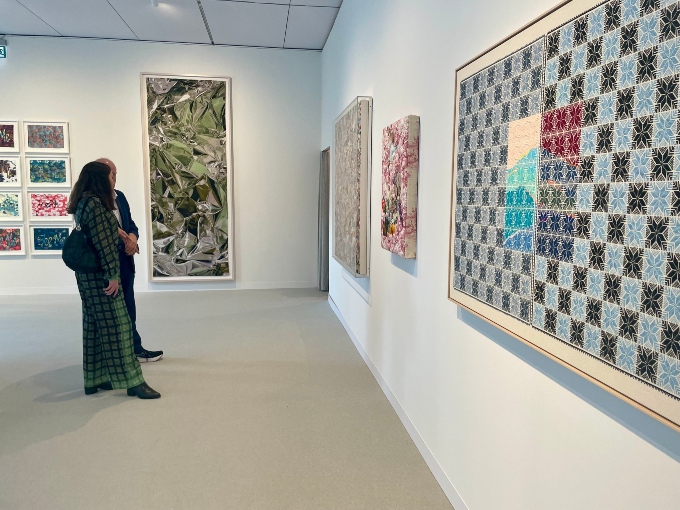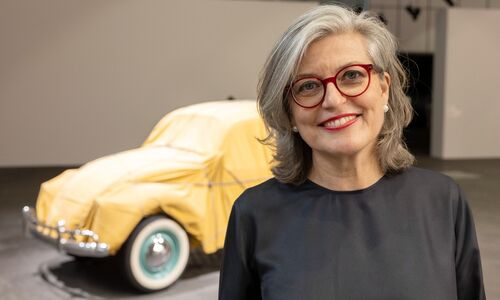Patricia Amberg: «It is Like a Club For Private Collectors»
UBS and Art Basel celebrate 30 years of partnership in 2024. Newly launched finews.art talks to UBS Art Advisory's Patricia Amberg about the value of an art collection, the waning influence of art critics, and contemporary trends.
Patricia Amberg, what concerns do clients have when it comes to art?
Client needs in that respect are very different and strongly contingent on how advanced they are when it comes to collecting art. Some clients are just starting and want to build a collection. Others are more advanced and need support in managing the relevant succession plans related to their collections.
Our role at the UBS Art Advisory is to guide and support them at all the different stages.
How do you support clients concretely?
It all starts with a vision. We help clients find out what they want to achieve with their collection and how they see it developing a few years down the line. That includes setting a mission statement. What kinds of themes should it have? What kind of budget is there for it? Who is involved in decision-making? Is there a succession or inheritance plan in place?
We offer strategic advisory services and a structured process that helps them achieve their objectives. Our team is made up of four people, three of which are based in Zurich and one in New York.

One of Art Basel 2024's highlights is the «Treads» exhibition from the UBS Art Collection. (Image: finews)
Has the practice of collecting art changed in recent years?
Yes, definitely. Access to information has changed significantly because of the internet and social media. The online art market has become more important. Collectors have a harder time navigating the art market as it is very complex and lightly regulated.
«Due diligence is a central part of our work»
Art critics used to play an important role in that they valued works from a historical perspective and lent them context. Those kinds of sources are harder to find these days. That is why it is key for collectors and advisors to be informed about the newest developments and the main players in the art market.
What role does due diligence play in your work?
Due diligence is a central part of our work. We have a structured approach when it comes to buying art works and we carefully review every work. That includes its history, ownership, authenticity, and the condition that the work is in, as well as much more. That kind of due diligence is imperative for ensuring the value and integrity of a collection.
How do you see art in the context of a portfolio of assets?
Even though art can make up a substantial proportion of an individual's wealth, we do not see it as a classical investment. The information needed to make art an asset class is not very transparent and often not accessible to the public. Still, we understand that clients with large collections see this as part of their total wealth and include it as part of their succession planning. Advising them throughout the life cycle of their collection is also an important part of our holistic approach.
You started the «UBS Collectors Circle» in 2018. Can you tell us more about that?
It was the result of a question made by one of our clients who wanted to exchange views with other collectors of a similar bent. It is almost like an alumni club for private art collectors - without artists, curators, or gallery owners. We organize four events a year under specific themes. One of those was «Legacy».
«A growing theme is culture-philanthropy»
The idea is to meet others who are on the same wavelength to network and work on projects. About one-third of the members have private museums. In the meantime, the community is made up of about 200 collectors from all the different continents.
What trends are you seeing with collectors?
A growing theme is culture-philanthropy. Many collectors want to be engaged above and beyond the purchase of art, by supporting young artists for example - or through foundations or artist residency programs. This kind of engagement helps to share art in society and give something back.
Do you collect art yourself?
Yes, I collect art, but on a small scale. My first work was a painting by a Flemish artist that I bought when I was 18 years old. My interests have widened since then and my collection now includes diverse media, including ceramics and glass.
Patricia Amberg is a Senior Art Advisor in Family Advisory, Art & Collecting at UBS Global Wealth Management. She offers strategic advisory services when it comes to building art collections, including starting both personal and institutional art collections. Patricia has a Master's in Art History and Archaeology from the University of Basel as well as an Executive MBA from the University of St. Gallen, and a Master's in Psychosocial Advisory Services from IAP Institute for Psychology / ZHAW Zurich. She also studied at Sotheby’s Institute of Art in London. She began her career in different art galleries and auction houses and was co-head and expert at Sotheby's Switzerland before she switched to UBS in 2005. She is a co-author of the UBS Collector's Compass.




















